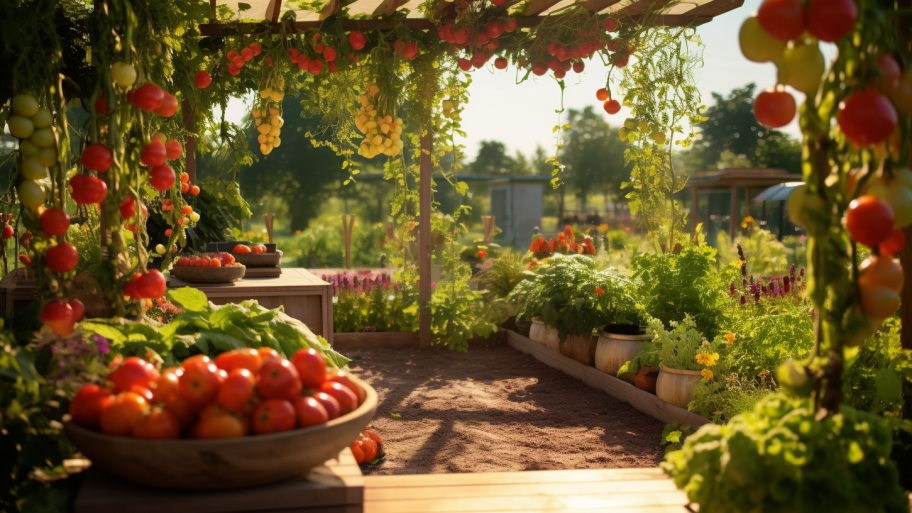Congratulations! You’ve made the wise decision to venture into the world of Hugelkultur. Now that you understand the principles and benefits of this remarkable gardening method, it’s time to roll up your sleeves and embark on the exciting journey of building your very own Hugelkultur bed. Fear not, for we are here to guide you through each step of the process, ensuring that you’ll soon be reveling in the magic of your thriving Hugelkultur garden.
Choosing the Right Location and Materials for Your Hugelkultur Bed
The first step in creating your Hugelkultur bed is to select the perfect location. Consider factors such as sunlight exposure, proximity to water sources, and accessibility for maintenance when making your decision. Ideally, your bed should receive at least six hours of sunlight daily and be situated in a well-draining area. If you live in a region with strong prevailing winds, consider placing your bed perpendicular to the wind direction to minimize erosion and evaporation.1 2 3
Once you’ve chosen your spot, it’s time to gather your materials. The foundation of your Hugelkultur bed will consist of logs and branches, preferably from hardwood species such as oak, maple, or birch. Avoid using wood from allelopathic trees like black walnut, as they can inhibit the growth of other plants. Additionally, collect a variety of organic materials, such as compost, grass clippings, leaves, and straw, to create the layers of your bed.4 5
Constructing Your Hugelkultur Bed: Layering Organic Materials
With your location and materials ready, it’s time to bring your Hugelkultur bed to life. Begin by outlining the shape and size of your bed, which can vary depending on your available space and gardening goals. A width of 4-6 feet is optimal for easy access to the center of the bed, while the length can be adjusted to suit your needs.
Next, dig a shallow trench, roughly 6-12 inches deep, within the boundaries of your bed. This trench will help anchor your logs and branches, providing stability to your mound. Fill the trench with your largest logs, packing them tightly together to minimize air pockets. On top of the logs, add a layer of smaller branches, twigs, and other woody debris. This layer should be roughly 6-12 inches thick, depending on the height you desire for your bed.
Now, it’s time to introduce the organic materials that will enrich your bed and nourish your plants. Start with a layer of nitrogen-rich green materials, such as grass clippings, kitchen scraps, or manure. This will help kick-start the decomposition process and provide essential nutrients for your plants. Continue layering with carbon-rich brown materials, such as leaves, straw, or shredded paper, followed by a layer of compost or well-rotted manure. Repeat this process until your mound reaches the desired height, typically 3-6 feet.
Finally, cap your Hugelkultur bed with a layer of topsoil, approximately 4-6 inches thick. This will create a smooth planting surface and help retain moisture within your bed. If desired, you can also mulch the top layer to further conserve water and suppress weeds.
Tips for Planting and Maintaining a Hugelkultur Bed
With your Hugelkultur bed complete, it’s time to populate it with a diverse array of plants. Choose species that are well-suited to your climate and soil conditions, as well as your personal gardening goals. Consider incorporating a mix of annual vegetables, perennial herbs, and flowering plants to create a visually stunning and productive garden. When planting, be mindful of each plant’s spacing and sunlight requirements to ensure they have room to grow and thrive.6
In the early stages, your Hugelkultur bed may require some supplemental watering, as the wood has not yet absorbed enough moisture to sustain your plants. However, over time, the need for irrigation will decrease as the decomposing wood retains more water. Keep an eye on your plants’ moisture needs and adjust your watering accordingly.
As your Hugelkultur bed matures, the decomposition process will continue to enrich the soil and improve its structure. You may find that weeds are less of an issue due to the natural mulching effect of the organic layers. However, it’s essential to monitor your bed for any potential pests or diseases and address them promptly to protect your plants.
With patience and care, your Hugelkultur bed will develop into a thriving, self-sustaining ecosystem that provides an abundance of fresh produce and enjoyment for years to come.
Now that you’ve mastered the art of constructing your Hugelkultur bed, it’s time to take your gardening skills to the next level. Discover the secrets of integrating Hugelkultur with permaculture principles, maximizing its benefits in small spaces, and overcoming common challenges in our final article, “Revolutionize Your Garden: Boost Hugelkultur Results with Proven Permaculture Strategies“. Unleash the full potential of your Hugelkultur garden and watch it flourish like never before.




